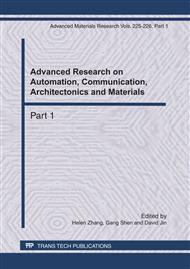p.903
p.907
p.911
p.917
p.921
p.925
p.929
p.933
p.937
Optimization Algorithms for Local Features
Abstract:
Feature spaces optimization plays a very important role in object recognition and categorization. After analyzing of several fashionable local features at present, some optimization algorithms based on the information theory are proposed. In this paper, we describe the approaches to recognize generic objects using these features which have been optimized. As baselines for comparison, we also implemented some additional recognition systems using other optimization algorithms. The performance analysis on the obtained experimental results demonstrates that the proposed optimization algorithms are effective and efficient.
Info:
Periodical:
Pages:
921-924
Citation:
Online since:
April 2011
Authors:
Price:
Сopyright:
© 2011 Trans Tech Publications Ltd. All Rights Reserved
Share:
Citation:


